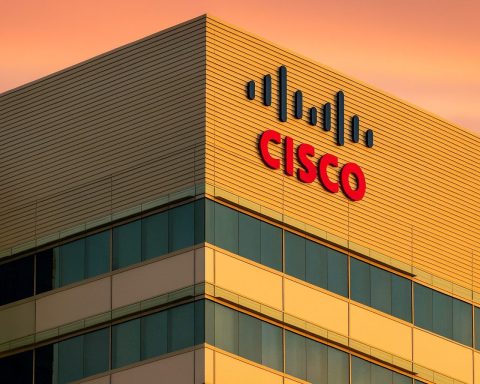Published: November 25, 2025 – informational, not investment advice.
Key takeaways for Chevron stock today (25 November 2025)
- Share price: Chevron Corporation (NYSE: CVX) is trading around $149.75 per share, leaving the stock almost unchanged versus Monday’s close and valuing the company just under $300 billion. [1]
- Position in its range: CVX sits about 11% below its 52‑week high of $168.96 and roughly 13% above its 52‑week low of $132.04, keeping it in the lower half of its one‑year trading range. [2]
- Dividend yield: With an annual dividend of $6.84 per share ($1.71 quarterly), the stock offers a yield of about 4.6% at current prices, with the next payout scheduled for December 10, 2025 following a November 18 ex‑dividend date. [3]
- Fresh news today: A Bloomberg report says Venezuela is tapping Chevron for key feedstock supplies after a U.S. warship blocked a sanctioned Russian tanker, putting Chevron once again at the center of geopolitical energy trade flows. [4]
- New product tied to CVX: Royal Bank of Canada has filed a Barrier Digital Note linked to Chevron stock, with a trade date of November 25, 2025 and a potential 13% fixed return if CVX stays above a preset barrier through March 2027. [5]
- Macro backdrop: Oil remains under pressure, with WTI around $58.50–$60 and Brent near $62.50 per barrel as global supply continues to outpace demand and the EIA forecasts Brent averaging about $55 in 2026. [6]
Below, we break down what all of this means for Chevron stock on Tuesday, November 25, 2025.
Chevron (CVX) stock price today: still stuck near the $150 line
As of early trading on Tuesday, Chevron shares are changing hands near $149.75, with intraday moves so far confined to a relatively tight band around that level. Market data show a recent day’s high and low in the $147.7–$150.5 zone and only about a 0.2% decline versus the previous close, meaning there’s no dramatic price shock in the stock itself today. [7]
Data from technical site StockInvest indicate that at Monday’s close of $149.75, Chevron’s: [8]
- 52‑week high was $168.96
- 52‑week low was $132.04
- Market capitalization stood around $299–300 billion
- 12‑month share performance is down about 7–8%
In other words, CVX is not a deep‑crash story, but it is trading at a discount to its highs as oil prices sag and investors digest a big acquisition (Hess) and a very ambitious growth plan.
Geopolitics in focus: Venezuela taps Chevron after U.S. warship blocks Russian tanker
The most notable Chevron‑specific headline on November 25 comes from Bloomberg, which reports that Venezuela has turned to Chevron for feedstock supplies after a U.S. destroyer blocked a sanctioned Russian tanker from approaching the country multiple times. [9]
While the full contractual and financial details are not public, several implications matter for CVX shareholders:
- Chevron’s license and footprint in Venezuela are paying off
- The U.S. has allowed Chevron to operate in Venezuela under specific sanctions waivers. Earlier in 2025, Reuters reported that Chevron cargoes accounted for roughly a quarter to a third of Venezuelan exports to the U.S. after a key license was granted, underscoring how central the company is to the country’s export revival. [10]
- Geopolitical risk remains high – and can cut both ways
- The new feedstock arrangement reportedly follows a tense standoff in which a U.S. warship blocked a sanctioned Russian ship from delivering naphtha, a diluent crucial for moving Venezuela’s extra‑heavy crude. [11]
- Chevron benefits when it becomes the “go‑to” partner for a country that suddenly needs alternative supplies – but those same geopolitical tensions can lead to sanction changes or disruptions if policy shifts.
- Signal to markets: Chevron is still a key lever in U.S. foreign energy policy
- From the U.S. government’s perspective, having an American supermajor like Chevron deep in Venezuelan flows is one way to counterbalance Russian influence and manage heavy‑crude supply into the Atlantic Basin. Analysts have highlighted this dynamic repeatedly as Chevron has ramped exports from Venezuela this year. [12]
For the stock, today’s Venezuela headline doesn’t immediately change earnings estimates, but it reinforces Chevron’s strategic importance in an increasingly fragmented oil market — a narrative that can matter for long‑term valuation and political risk premia.
Oil below $60: tough macro, but Chevron leans on its 2030 cash‑flow plan
Chevron’s share price softness this month tracks an uncomfortable reality for all oil majors: crude is weak.
A late‑November energy markets note from MarketMinute describes WTI crude hovering around $58.50–$60 per barrel and Brent around $62.43–$62.56, with the U.S. Energy Information Administration (EIA) expecting Brent to average only $54 in Q1 2026 and $55 for full‑year 2026. [13]
Key points from that macro picture:
- Global supply ≈ 106.3 million barrels/day in 2025, outpacing demand growth of about 0.7 million barrels/day, according to IEA estimates cited in the article. [14]
- OPEC+ is steadily unwinding earlier production cuts, adding barrels back each month.
- The U.S. itself is pumping record volumes above 13.5 million barrels/day, even with a relatively low rig count thanks to efficiency gains. [15]
That is not the dream environment for an oil‑heavy integrated major.
However, Chevron has been very explicit about how it plans to cope. At its Investor Day on November 12, 2025, the company outlined a five‑year plan to 2030 that assumes Brent at just $70 per barrel and still targets: [16]
- >10% annual growth in adjusted free cash flow
- >10% annual growth in earnings per share
- 2–3% compound annual growth in oil and gas production
- Capex + dividend breakeven below $50 Brent, giving it room to fund both investment and payouts even in a relatively low‑price environment
The same Investor Day presentation reaffirmed that Chevron plans to: [17]
- Invest $18–$21 billion per year in capital spending
- Improve return on capital employed by more than 3 percentage points by 2030 (at $70 Brent)
- Maintain $10–$20 billion per year in share repurchases through 2030
In a separate article, Motley Fool highlighted that among the 100 largest S&P 500 companies, Chevron is one of a small handful (about 35) targeting >10% annual EPS and free‑cash‑flow growth, and the only one in that elite subset combining such growth targets with a bond rating of at least AA‑ and a dividend yield above 4%. [18]
That combination — solid balance sheet, high yield, and guided double‑digit growth off conservative price assumptions — is central to today’s bullish narratives around CVX, even as spot oil prices remain under pressure.
Dividend story: 4.6% yield today, with strong signals on future increases
For income‑focused investors, Chevron’s dividend is front and center:
- The company is currently paying a quarterly dividend of $1.71 per share, or $6.84 annually. [19]
- At a share price near $149.75, that works out to a forward yield of roughly 4.6%. [20]
- The latest dividend was declared on October 31, with an ex‑dividend date of November 18 and a payment date of December 10, 2025. [21]
Chevron has:
- Increased its dividend for 38 consecutive years, with approximately 7% annual growth over the past 25 years, according to company and Motley Fool commentary. [22]
- Raised the payout to $1.71 per quarter in early 2025 and has telegraphed its intention to continue dividend growth as free cash flow expands.
A recent dividend‑focused analysis on Barchart argues that even a 5% increase in the annual dividend to about $7.18 per share could justify a fair value near $170 per share if the stock’s yield reverts towards its multi‑year average around 4.2%, implying mid‑teens price upside from roughly $150. [23]
That is an opinion, not a guarantee — but it illustrates how much of today’s bull case in CVX rests on dividend growth plus buybacks rather than big multiple expansion.
Q3 performance: record production, earnings beat, and cash to fund those payouts
Today’s valuation also reflects fresh Q3 numbers that landed at the end of October:
- Adjusted Q3 2025 EPS of $1.85, beating consensus forecasts around $1.66–$1.71. [24]
- Revenue of about $49.7 billion, down roughly 1.9% year‑on‑year but still ahead of many peers on volume growth. [25]
- Record production of about 4.1 million barrels of oil equivalent per day, up more than 20% year‑over‑year, with U.S. and international volumes both rising sharply, helped by the Hess acquisition and Permian Basin growth. [26]
- Operating cash flow of $9.4 billion and free cash flow of $4.9 billion, even with lower average liquids prices. [27]
- Chevron maintained the $1.71 quarterly dividend and repurchased about $2.6 billion of stock during the quarter. [28]
Those Q3 results are one reason you see dividend‑focused outlets and analysts treating the recent dip towards $150 as an opportunity rather than a red flag, though other analysts are more cautious.
What big money and Wall Street are doing with Chevron
Institutional flows
Recent filings show that large asset managers remain heavily involved in CVX:
- Franklin Resources Inc. increased its Chevron position by about 2.1% in Q2, bringing its stake to 17.8 million shares (roughly 1.03% of the company) and making CVX its 25th‑largest holding, valued around $2.5 billion at the time of the filing. [29]
- A separate filing (via InsuranceNewsNet/MarketBeat syndication) notes that Vestor Capital LLC boosted its Chevron holding by over 3,500% in the second quarter, albeit from a small base, highlighting that some smaller institutional investors are also building positions. [30]
Altogether, hedge funds and other institutions control more than 70% of Chevron’s float, according to MarketBeat’s breakdown. [31]
Analyst consensus
The same MarketBeat report summarizes current Street views as: [32]
- Rating: Overall “Hold”, based on
- 11 Buy ratings
- 9 Hold ratings
- 3 Sell ratings
- Average price target: Around $166.55 per share
That average target is about 11% above today’s ~150 level, which broadly lines up with dividend‑model estimates like the Barchart fair‑value work mentioned earlier.
New product of the day: RBC’s Barrier Digital Notes tied to Chevron
In structured‑product land, Royal Bank of Canada (RBC) filed a preliminary pricing supplement for “Barrier Digital Notes Linked to the Common Stock of Chevron Corporation”, with: [33]
- Trade date: November 25, 2025
- Maturity: March 2, 2027
- Barrier: 80% of Chevron’s initial stock price on the trade date
- Digital return: A fixed 13% payoff at maturity if CVX finishes at or above the barrier; otherwise, noteholders participate in the downside, potentially losing a substantial portion (or all) of principal.
This kind of product doesn’t change Chevron’s fundamentals — it’s issued by RBC, not by Chevron — but it shows that structured‑product desks see investor demand for yield linked to a relatively stable, high‑dividend blue chip like CVX. It also implicitly suggests a market view that Chevron is unlikely to lose more than 20% over roughly 15 months, though investors in such notes take on both credit risk and equity risk.
Technical picture and near‑term trading levels
Technical research from StockInvest paints a cautious short‑term picture: [34]
- CVX closed Monday at $149.75, down 0.15% on the day.
- Over the last week, the stock is down about 3.3%, and over the last month, about 3.7%.
- Their algorithms currently classify Chevron as a “sell candidate”, with several moving‑average‑based signals flashing sell and an overall technical score of about ‑3.3.
- The site highlights support near $148.90 (accumulated volume) and resistance around $153.32, giving traders a short‑term range to watch.
- Daily volatility has been modest, with roughly 1.6% average moves and an expected intraday swing range today between $148.33 and $151.17, based on recent average true range.
Meanwhile, MarketBeat notes that Chevron’s 50‑day simple moving average sits around the mid‑$150s, while the 200‑day average is just above $150, meaning the stock is currently trading slightly below its short‑term trend line but close to its longer‑term average — a classic “consolidation” look rather than a collapse. [35]
How today fits the bigger Chevron story
Put together, November 25, 2025 looks like a “steady but tense” day for Chevron stock:
- The share price is basically flat around the $150 mark, in the lower half of its 52‑week range. [36]
- Oil prices remain under pressure, with WTI under $60 and credible forecasts for subdued prices through 2026 — a clear headwind for earnings multiples. [37]
- Geopolitics are front‑and‑center again as Venezuela turns to Chevron for feedstock after a U.S. warship blocked a Russian tanker, underlining the strategic importance — and complexity — of Chevron’s footprint there. [38]
- Income investors continue to focus on the 4.6% dividend yield, the December 10 payment, and the company’s long record of annual hikes. [39]
- Wall Street’s stance is balanced — a “Hold” consensus with double‑digit upside in most price targets — while large institutions like Franklin Resources have added to positions. [40]
- Structured‑product desks are issuing new notes tied to CVX today, signaling that banks see continued appetite to take Chevron‑linked risk in exchange for yield. [41]
For investors, traders, or readers following Chevron on Google News or Discover, today’s story is less about a big price move and more about how ongoing geopolitical developments and a weak oil tape intersect with a very shareholder‑friendly long‑term plan.
Important disclaimer
This article is for informational and educational purposes only and does not constitute investment advice, stock recommendations, or an offer to buy or sell any security. Chevron stock, oil prices, and all other financial instruments involve risk, including the potential loss of principal. Always do your own research and consider speaking with a licensed financial adviser before making investment decisions.
References
1. stockinvest.us, 2. stockinvest.us, 3. stockinvest.us, 4. www.bloomberg.com, 5. www.sec.gov, 6. markets.chroniclejournal.com, 7. stockinvest.us, 8. stockinvest.us, 9. www.bloomberg.com, 10. www.reuters.com, 11. www.bloomberg.com, 12. www.kpler.com, 13. markets.chroniclejournal.com, 14. markets.chroniclejournal.com, 15. markets.chroniclejournal.com, 16. www.nasdaq.com, 17. www.nasdaq.com, 18. www.nasdaq.com, 19. stockinvest.us, 20. stockinvest.us, 21. stockinvest.us, 22. www.nasdaq.com, 23. www.barchart.com, 24. coincentral.com, 25. coincentral.com, 26. coincentral.com, 27. coincentral.com, 28. coincentral.com, 29. www.marketbeat.com, 30. insurancenewsnet.com, 31. www.marketbeat.com, 32. www.marketbeat.com, 33. www.sec.gov, 34. stockinvest.us, 35. www.marketbeat.com, 36. stockinvest.us, 37. markets.chroniclejournal.com, 38. www.bloomberg.com, 39. stockinvest.us, 40. www.marketbeat.com, 41. www.sec.gov










